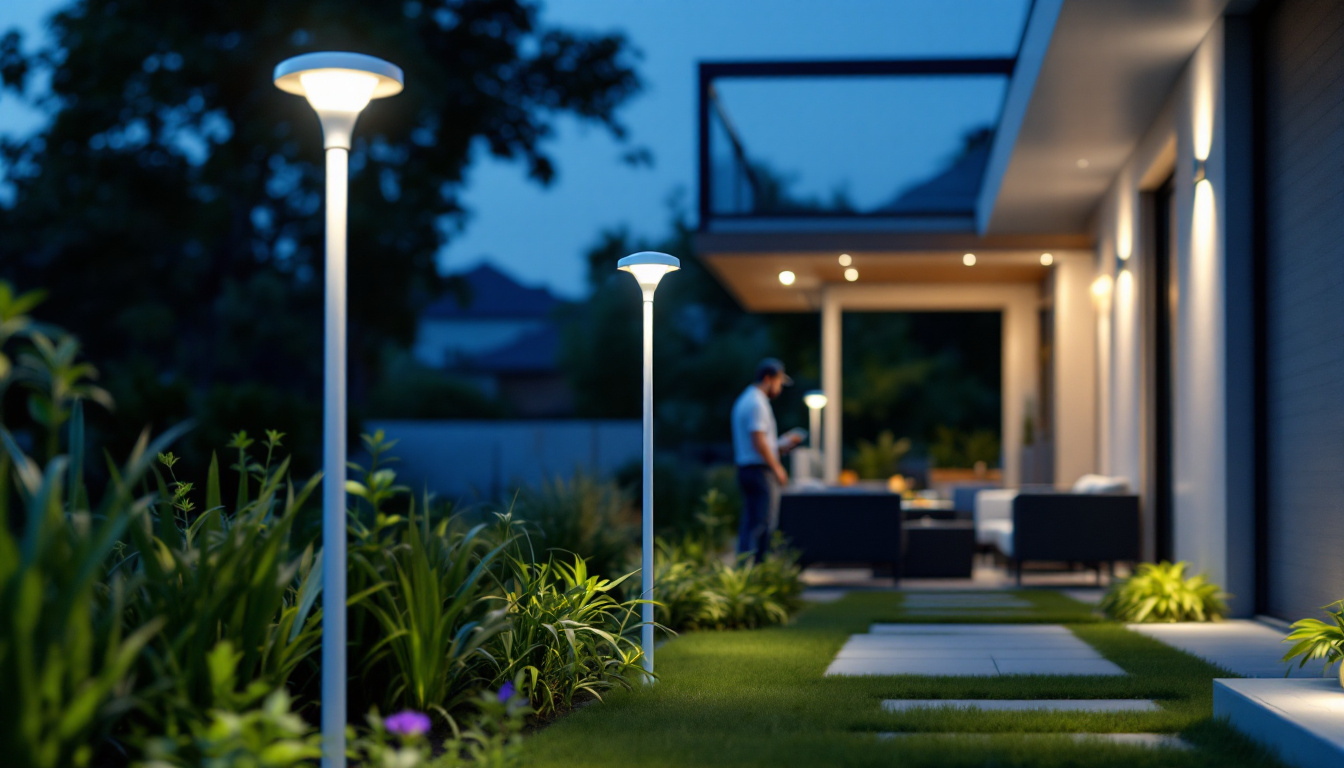
In recent years, LED lighting has gained significant popularity due to its energy efficiency, longevity, and versatility. However, many lighting contractors encounter challenges when it comes to dimming LED lights. This article aims to provide a comprehensive guide on how to effectively dim LED lighting, covering essential concepts, tools, and techniques.
Before diving into the methods and tools for dimming LED lights, it is crucial to understand the basic principles of LED technology and how it differs from traditional incandescent bulbs.
LEDs, or Light Emitting Diodes, produce light through a process called electroluminescence. When an electric current passes through a semiconductor material, it emits photons, creating visible light. Unlike incandescent bulbs, which produce light by heating a filament, LEDs are much more efficient and have a longer lifespan. This efficiency is not only reflected in their energy consumption but also in their ability to produce less heat, making them safer and more versatile for various applications.
Furthermore, the color temperature of LED lights can be adjusted to create different atmospheres, from warm whites that mimic traditional bulbs to cooler tones that enhance productivity in workspaces. This adaptability is a significant advantage, allowing for tailored lighting solutions that meet the specific needs of any environment.
Dimming LED lights not only enhances the ambiance of a space but also contributes to energy savings. By reducing the brightness, contractors can help clients achieve the desired mood while minimizing energy consumption. Additionally, dimming can extend the lifespan of LED fixtures, providing long-term benefits. This is particularly important in commercial settings where lighting can account for a significant portion of energy costs.
Moreover, the ability to control lighting levels can significantly impact the functionality of a space. For example, in a restaurant, dimming can create a cozy atmosphere for dinner service, while brighter settings can be used for daytime operations. In residential settings, dimmers allow homeowners to adjust lighting for different activities, whether it be a movie night or a lively gathering. This flexibility not only enhances user experience but also promotes sustainable practices by reducing unnecessary energy use during off-peak times.
There are several methods available for dimming LED lights, each with its advantages and disadvantages. Understanding these methods is essential for selecting the right solution for a project.
Phase-cut dimming is one of the most common methods used for dimming LED lights. It involves cutting off a portion of the AC waveform to reduce the amount of power delivered to the light source. There are two types of phase-cut dimming: leading edge and trailing edge.
Leading edge dimmers work by cutting the beginning of the AC waveform, while trailing edge dimmers cut the end. Trailing edge dimmers are generally more compatible with LED technology, providing smoother dimming and reducing flicker. However, it is important to note that not all LED bulbs are compatible with phase-cut dimming, which can lead to issues such as buzzing or flickering. Therefore, when choosing LED fixtures, it is crucial to look for those specifically labeled as “dimmable” and compatible with the chosen dimming method.
0-10V dimming is another popular method that allows for precise control over LED lighting. This system uses a low-voltage control signal to adjust the brightness of the lights. A 0-10V dimming system typically consists of a compatible LED driver and a control device, such as a wall-mounted dimmer or a lighting control system.
This method is particularly useful in commercial applications where multiple fixtures need to be controlled simultaneously. It provides a wider dimming range and is less prone to flickering compared to phase-cut dimming. Additionally, 0-10V dimming systems can be integrated with building management systems, allowing for automation and energy-saving features. This makes them an attractive option for businesses looking to enhance their energy efficiency while maintaining optimal lighting conditions.
DMX (Digital Multiplex) dimming is primarily used in theatrical and architectural lighting applications. This method allows for advanced control over multiple lighting fixtures using a single control signal. DMX systems can be programmed to create complex lighting scenes and effects, making them ideal for stage productions and events.
While DMX dimming offers unparalleled flexibility, it requires a more complex setup and is typically more expensive than other dimming methods. Contractors should assess the specific needs of their clients before recommending this solution. Furthermore, DMX systems can be expanded and customized with various accessories, such as wireless transmitters and receivers, which can enhance their functionality and ease of use. This adaptability makes DMX a popular choice not only in theaters but also in art installations and high-end residential projects, where dynamic lighting plays a crucial role in the overall ambiance.
When selecting a dimming solution for LED lights, several factors must be considered to ensure compatibility and optimal performance.
Not all LED fixtures are compatible with every dimming method. It is essential to check the specifications of the LED lights being used and ensure they are designed for dimming. Some LED products may require specific dimmers or drivers to function correctly.
Contractors should also be aware of the wattage limitations of the dimmers and ensure that the total wattage of the connected LED fixtures does not exceed the dimmer’s capacity.
Understanding the preferences and needs of clients is crucial in selecting the right dimming solution. Some clients may prioritize simplicity and ease of use, while others may require advanced control options. Engaging in a thorough discussion with clients about their lighting goals can help contractors make informed recommendations.
Budget constraints can significantly impact the choice of dimming solutions. While advanced systems like DMX offer extensive features, they may not be feasible for all projects. Contractors should provide clients with a range of options, outlining the benefits and costs associated with each solution to facilitate informed decision-making.
Proper installation is crucial for ensuring the optimal performance of dimmable LED lights. Here are some essential tips for contractors to follow during installation.
Every LED fixture and dimmer comes with specific installation instructions provided by the manufacturer. It is vital to read and adhere to these guidelines to avoid compatibility issues and ensure safety. Following the manufacturer’s recommendations can also help in troubleshooting any potential problems.
As mentioned earlier, compatibility between LED fixtures, dimmers, and drivers is essential. Using components that are designed to work together will minimize flickering and ensure smooth dimming performance. Contractors should always verify compatibility before proceeding with installation.
After installation, it is crucial to test the dimming system thoroughly. This includes checking for flickering, ensuring that the dimming range meets client expectations, and verifying that all components are functioning correctly. Conducting a comprehensive test can help identify any issues early on, allowing for prompt resolution.
Flickering is one of the most common issues encountered with dimmable LED lights. This can be caused by incompatible dimmers, poor-quality LED drivers, or incorrect wiring. To resolve flickering, contractors should first ensure that all components are compatible. If the problem persists, replacing the dimmer with a trailing edge model or upgrading to a higher-quality LED driver may be necessary.
Clients may express dissatisfaction if the dimming range is limited or does not meet their expectations. This issue can often be attributed to the dimmer’s specifications or the wattage of the connected fixtures. Contractors should verify that the total wattage does not exceed the dimmer’s capacity and consider upgrading to a more advanced dimming solution if necessary.
Inconsistent dimming performance can be frustrating for clients. This may occur due to variations in the quality of LED fixtures or drivers. Contractors should recommend reputable brands known for their reliability. Additionally, ensuring that all components are properly installed and configured can help mitigate performance issues.
The field of LED dimming technology is continually evolving, with new advancements emerging regularly. Staying informed about these trends can help contractors provide cutting-edge solutions to their clients.
Smart lighting systems are becoming increasingly popular, allowing users to control their lighting remotely through smartphones or voice-activated devices. These systems often include advanced dimming capabilities, enabling users to customize their lighting preferences easily. Contractors should consider incorporating smart lighting solutions into their offerings to meet the growing demand for automation.
As home automation systems gain traction, integrating LED dimming solutions with these systems will become more common. This integration allows for seamless control of lighting alongside other smart home features, such as security and climate control. Contractors should explore partnerships with home automation providers to expand their service offerings.
Ongoing advancements in LED technology are expected to lead to even greater energy efficiency. Newer LED products may offer improved dimming capabilities while consuming less energy. Staying abreast of these developments will enable contractors to recommend the most efficient solutions to their clients.
Dimming LED lights is a valuable skill for lighting contractors, enhancing the functionality and aesthetics of various spaces. By understanding the principles of LED technology, exploring different dimming methods, and staying informed about industry trends, contractors can provide exceptional service to their clients. Proper installation and troubleshooting techniques further ensure that dimmable LED lights perform optimally, meeting the diverse needs of modern lighting applications.
Incorporating these practices into daily operations can empower contractors to navigate the evolving landscape of LED lighting effectively, ultimately leading to satisfied clients and successful projects.
Ready to take your lighting projects to the next level? At LumenWholesale, we provide lighting contractors with the highest quality, spec-grade LED products at unbeatable wholesale prices. Our extensive selection is designed to meet the highest industry standards, ensuring you have access to reliable and high-performance lighting solutions for every application. With the convenience of free shipping on bulk orders, you can trust that you’re getting premium lighting at the best value — without any hidden fees or compromises. Elevate your lighting game and experience the perfect blend of quality, affordability, and convenience. Visit LumenWholesale today for Wholesale Lighting at the Best Value.

Discover essential insights for lighting contractors in our comprehensive guide on loading dock lights.

Discover why staying updated on LED and solar lighting technologies is crucial for lighting contractors.

Discover how purchasing a 10-pack of linkable shop lights on eBay can revolutionize your lighting projects.

Discover the essential insights lighting contractors need to meet client expectations with T12 light bulbs.